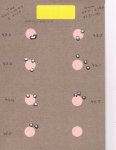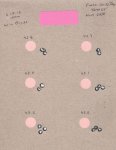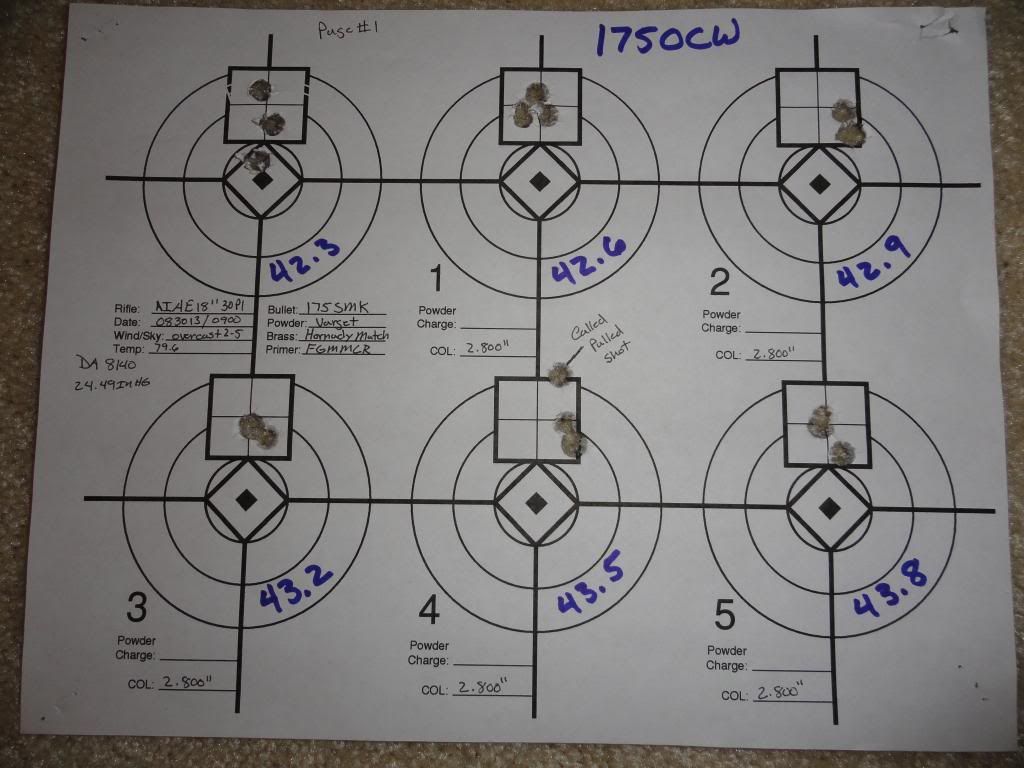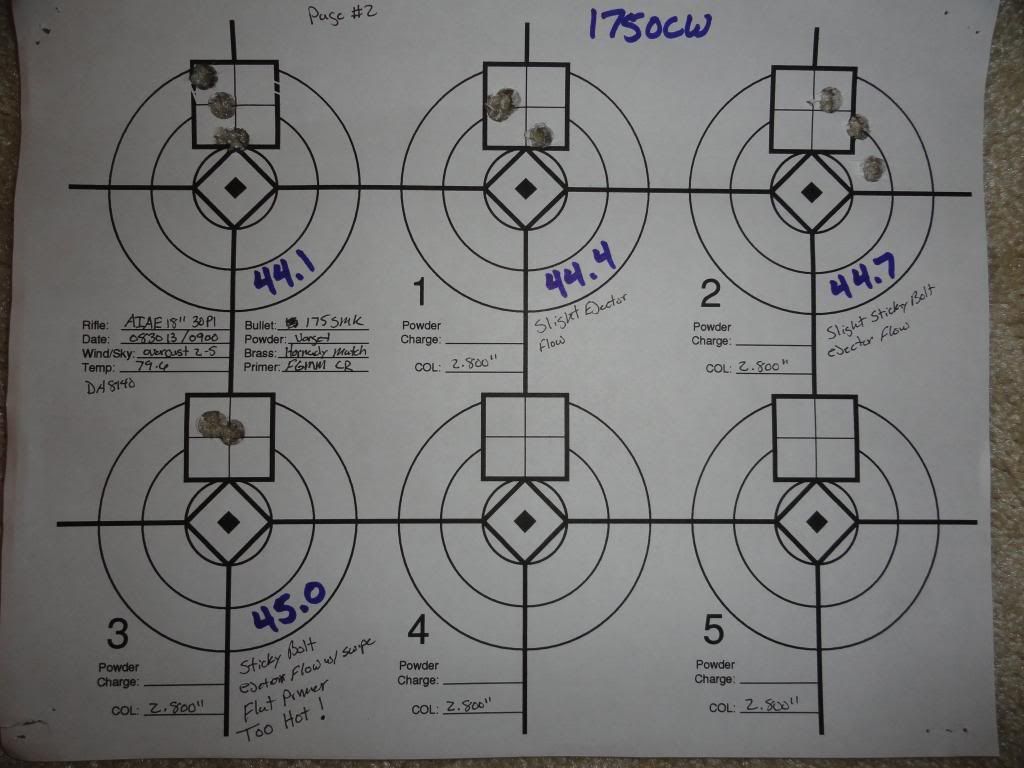Just wanted to run my OCW test by some of you guys to confirm that I'm reading the results correctly.
Rifle: AIAE MKIII, 308, 20" barrel w/ muzzle break.
Brass: Federal GMM, once fired
Powder: Varget
Primer: CCI BR-2
Bullet: 175gr SMK's
Headspace: 1.558"
COAL: 2.130" (.020" Jump)
I started at 42.0gr of Varget and went up to 45.0gr in .3gr increments. I used 42.0, 42.3, 42.6, 42.9 as fouling shots and started my OCW test from there.
From with I can gather, 43.2 would be my low node, 44.1 would be my scatter node, and somewhere between 44.7 & 45.0 would be my optimal node. I didn't see any pressure signs at 45.0 but I didn't make any loads past book max. Although I love the group at 43.2 I read not to chase tight groups but rather similar groups.
For reference, the yellow label is 2.75" long. Any yes, there are 3 shots at 43.2 & 45.0. Let me know what you think. Thanks.
Rifle: AIAE MKIII, 308, 20" barrel w/ muzzle break.
Brass: Federal GMM, once fired
Powder: Varget
Primer: CCI BR-2
Bullet: 175gr SMK's
Headspace: 1.558"
COAL: 2.130" (.020" Jump)
I started at 42.0gr of Varget and went up to 45.0gr in .3gr increments. I used 42.0, 42.3, 42.6, 42.9 as fouling shots and started my OCW test from there.
From with I can gather, 43.2 would be my low node, 44.1 would be my scatter node, and somewhere between 44.7 & 45.0 would be my optimal node. I didn't see any pressure signs at 45.0 but I didn't make any loads past book max. Although I love the group at 43.2 I read not to chase tight groups but rather similar groups.
For reference, the yellow label is 2.75" long. Any yes, there are 3 shots at 43.2 & 45.0. Let me know what you think. Thanks.
Attachments
Last edited:








